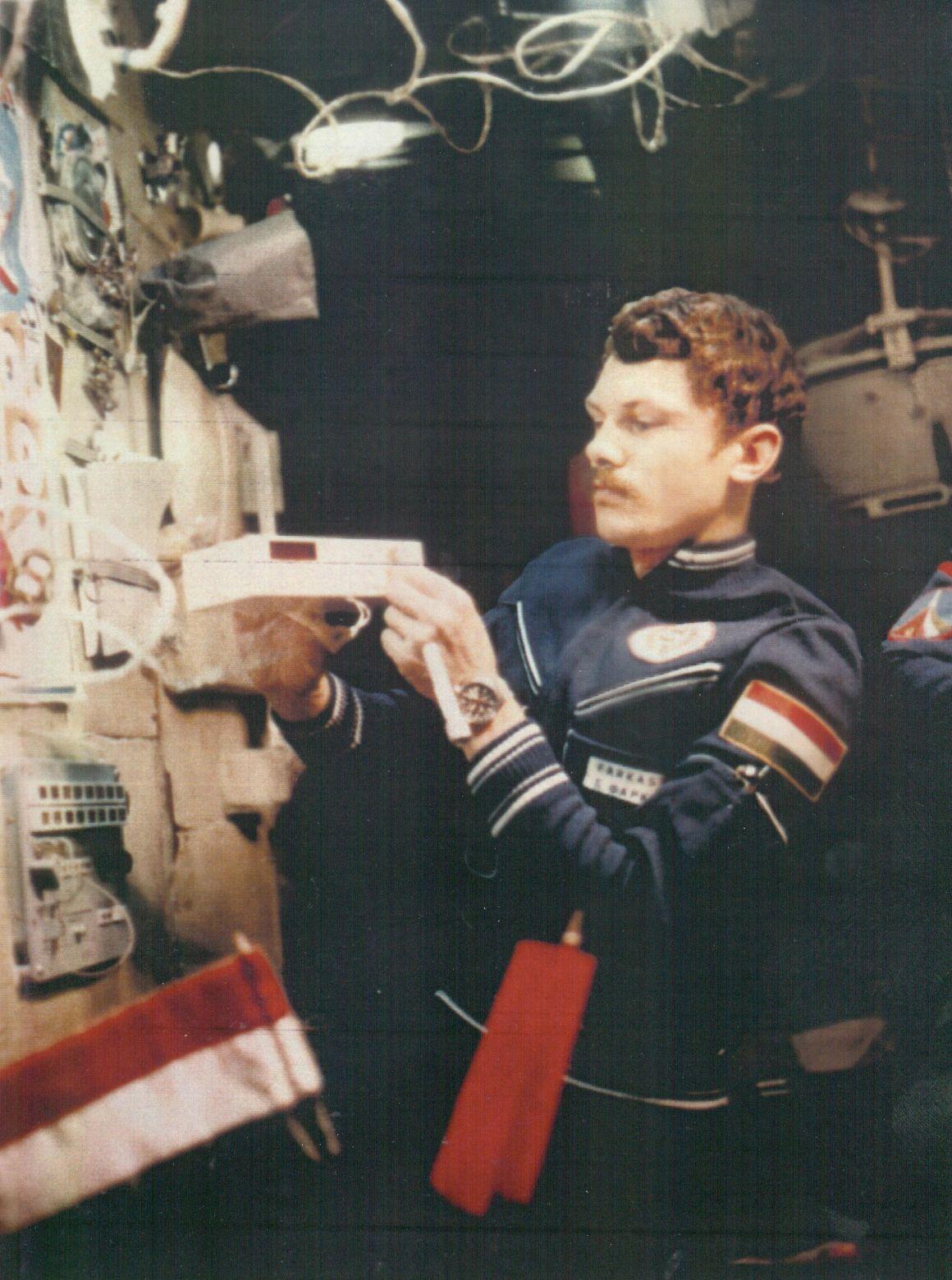Historical background
Hungary has a very significant experience in the research of the cosmic radiation. The history begin in the late 1970’s with the development of the Pille. Pille is a thermoluminescence dosimeter system and was used many times onboard space crafts and space stations, like Salyut-6,-7 (on the picture Bertalan Farkas Hungarian astronaut onboard the Salyut space station can be seen with a Pille dosimeter system); the other pictures shows astronaut Sally Ride with the Pille system onboard the Space Shuttle, and we had also measurements onboard the MIR and nowadays Pille is the part of the service system of the Russian module „Zvezda” of the ISS.
Since the beginning of the 21 century a new dosimeter system has been under development in Hungary, called TriTel. It can also measure the „quality” of the cosmic radiation. It will be operated onboard the ISS Columbus modul (research modul of ESA) and onboard the Russian Segment too. Another version of the instrument will be onboard the ESEO satellite, too.

One of Hungary's pioneers in space research was the KFKI AEKI. Since the 60's a series of on-board scientific devices have been developed and manufactured for geophysical rockets, satellites, interplanetary probes and space stations. The space research activity of the institute arised from the experience achieved in developing high reliable nuclear instruments on technical side and from traditional research fields of the institute on scientific side. Onboard instruments produced by the lab (previously Space Electronics Lab.) measured the parameters of micrometeorites and the characteristics of the ionosphere of the Earth, investigated the solar wind and the plasma surrounding comet Halley and Mars. Continuously developed generations of the thermoluminescent dosimeter (TLD) "Pille" have been successfully used for personal and scientific measurements on board the space stations Salyut-6, -7, Mir, and ISS and the American Space Shuttle.